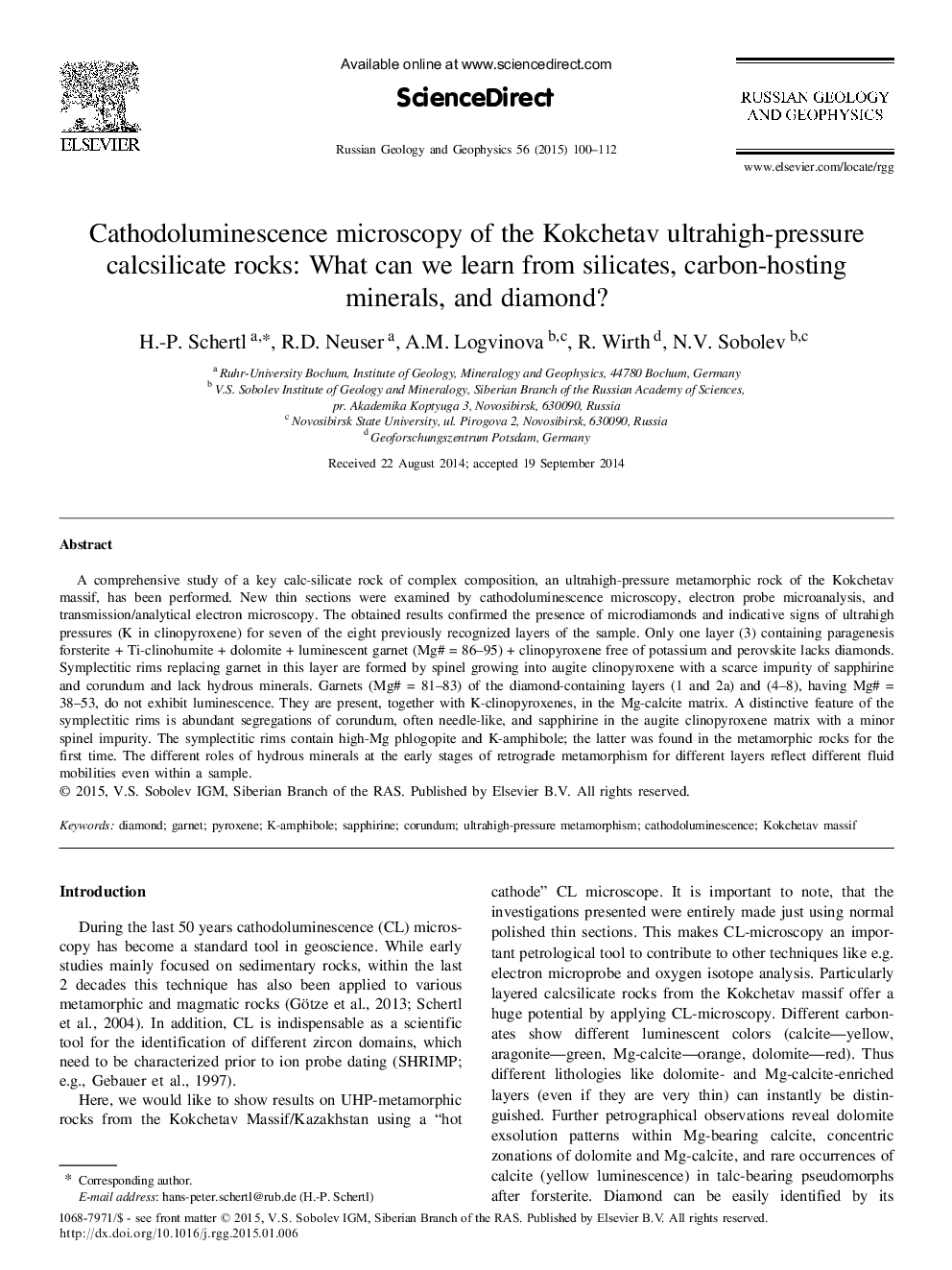| Article ID | Journal | Published Year | Pages | File Type |
|---|---|---|---|---|
| 4738443 | Russian Geology and Geophysics | 2015 | 13 Pages |
A comprehensive study of a key calc-silicate rock of complex composition, an ultrahigh-pressure metamorphic rock of the Kokchetav massif, has been performed. New thin sections were examined by cathodoluminescence microscopy, electron probe microanalysis, and transmission/analytical electron microscopy. The obtained results confirmed the presence of microdiamonds and indicative signs of ultrahigh pressures (K in clinopyroxene) for seven of the eight previously recognized layers of the sample. Only one layer (3) containing paragenesis forsterite + Ti-clinohumite + dolomite + luminescent garnet (Mg# = 86–95) + clinopyroxene free of potassium and perovskite lacks diamonds. Symplectitic rims replacing garnet in this layer are formed by spinel growing into augite clinopyroxene with a scarce impurity of sapphirine and corundum and lack hydrous minerals. Garnets (Mg# = 81–83) of the diamond-containing layers (1 and 2a) and (4–8), having Mg# = 38–53, do not exhibit luminescence. They are present, together with K-clinopyroxenes, in the Mg-calcite matrix. A distinctive feature of the symplectitic rims is abundant segregations of corundum, often needle-like, and sapphirine in the augite clinopyroxene matrix with a minor spinel impurity. The symplectitic rims contain high-Mg phlogopite and K-amphibole; the latter was found in the metamorphic rocks for the first time. The different roles of hydrous minerals at the early stages of retrograde metamorphism for different layers reflect different fluid mobilities even within a sample.
